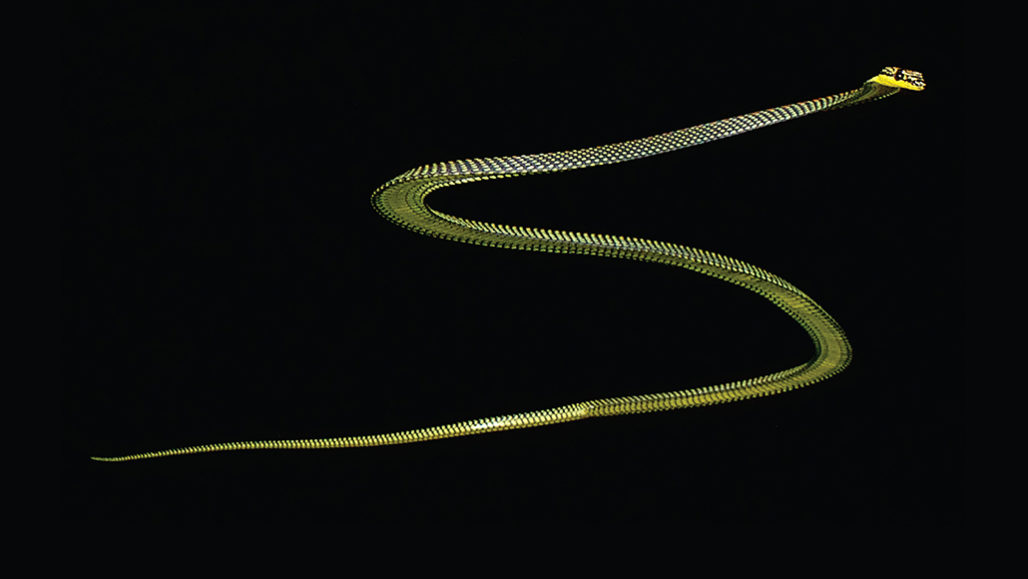Flying snakes wriggle their way through the air
Scientists filmed snake gymnastics to figure out how they fly so far

This paradise tree snake stays sky high because it can wiggle its body back and forth to remain up, a new study shows.
Jake Socha
Come explore with us!
Scientists filmed snake gymnastics to figure out how they fly so far

This paradise tree snake stays sky high because it can wiggle its body back and forth to remain up, a new study shows.
Jake Socha
Flying snakes float gracefully from tree to tree. But they don’t have wings to guide these travels. Snakes instead get their glide on with some help from the wiggles.
Paradise tree snakes (Chrysopelea paradisi) fling themselves from branches, gliding through the air. They will land gently on the next tree or the ground. They can leap distances of 10 meters (10 yards) or more. In the air, they undulate — wriggling back and forth. That wriggling isn’t a useless attempt to replicate how the reptiles slither across land or swim through water. Instead, those contortions are essential for stable gliding says Isaac Yeaton. He’s a mechanical engineer at Johns Hopkins University Applied Physics Laboratory in Laurel, Md.
“They have evolved this ability to glide,” says Yeaton. “And it’s pretty spectacular.” Physicists already knew that tree snakes flatten their bodies as they leap. That generates lift — upward force that helps an object stay in the air. But scientists weren’t quite sure how the long, slender snakes stayed upright as they flew, without tumbling and landing snout-first.
To record the snakes’ twists and turns, Yeaton, then at Virginia Tech in Blacksburg, and colleagues stuck reflective tape on the snakes’ backs. With high-speed cameras they captured the motion as snakes launched themselves in the air.
Snakes perform a complex dance as they soar. The gliding snakes wriggle their bodies side to side. They also undulate them up and down, the researchers found. Their tails whip above and below the level of their heads.
All those motions turned out to play a role to the serpent’s flight. The researchers used their videos to create a computer simulation of gliding snakes. In this computer model, snakes that undulated flew similarly to the real-life snakes. But those that didn’t wriggle failed spectacularly. Stiff snakes rotated to the side or fell head over tail. It took a wiggle to maintain a graceful, stable glide.
Yeaton and his colleagues shared their findings June 29 in Nature Physics.

Weekly updates to help you use Science News Explores in the learning environment
Thank you for signing up!
There was a problem signing you up.